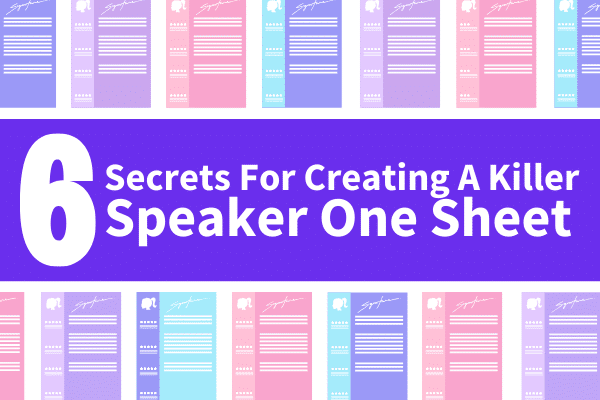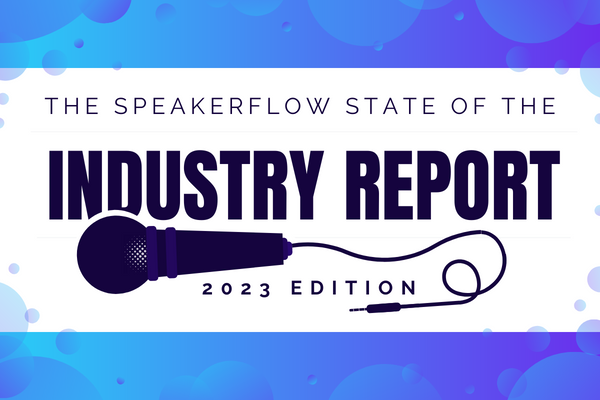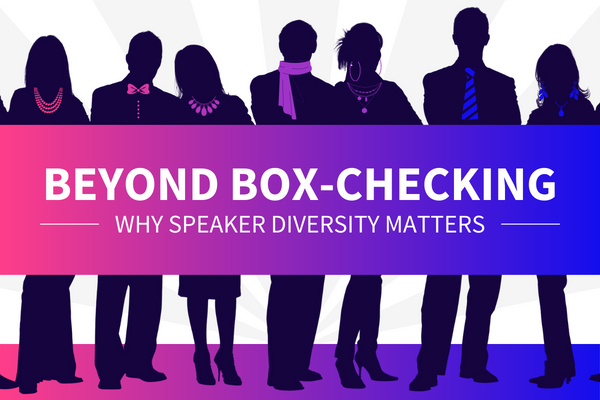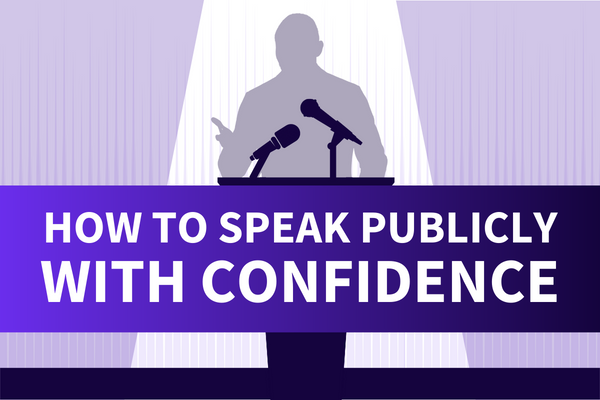Within the speaking industry, there are countless ways to marketing your speaking services to event planners. From your website to your social media profiles, each piece in your marketing strategy plays a role in gaining attention for you and your brand. Today, a large percentage of these efforts in conducted entirely online. This has served to not only make planning easier on decision-makers, as they search for speakers. It’s also provided a great deal of visibility to digitally-savvy speakers who might not have been noticed otherwise. That said, one piece of speaking collateral that spans the divide between print and digital is your speaker one sheet. You knew we would cover it eventually, right? 🤷
Because your one sheet is so concise, many speakers struggle to create one with which they are truly confident. That’s why, in this quick guide, we’re going to break down the key elements to a stellar speaker one sheet. When done well, a speaker one sheet can be an easy, simple way to close a sale without being pushy. Knowing this, if you’re unsure if yours is up to date or if you don’t have one at all, this is the blog for you. Below are a few of the questions and topics we’ll tackle to get your speaker one sheet picture perfect.
- What is a speaker one sheet?
- Why do I need a speaker one sheet?
- Secrets to a Killer Speaker One Sheet
- 1. Showcase your skills and credentials.
- 2. Pinpoint your target audience.
- 3. Explain how your clients will benefit from hiring you.
- 4. Explain how the audience will benefit from your presentation.
- 5. Conclude with testimonials from noteworthy clients.
- 6. Have your contact information and headshot clearly visible.
What is a speaker one sheet?
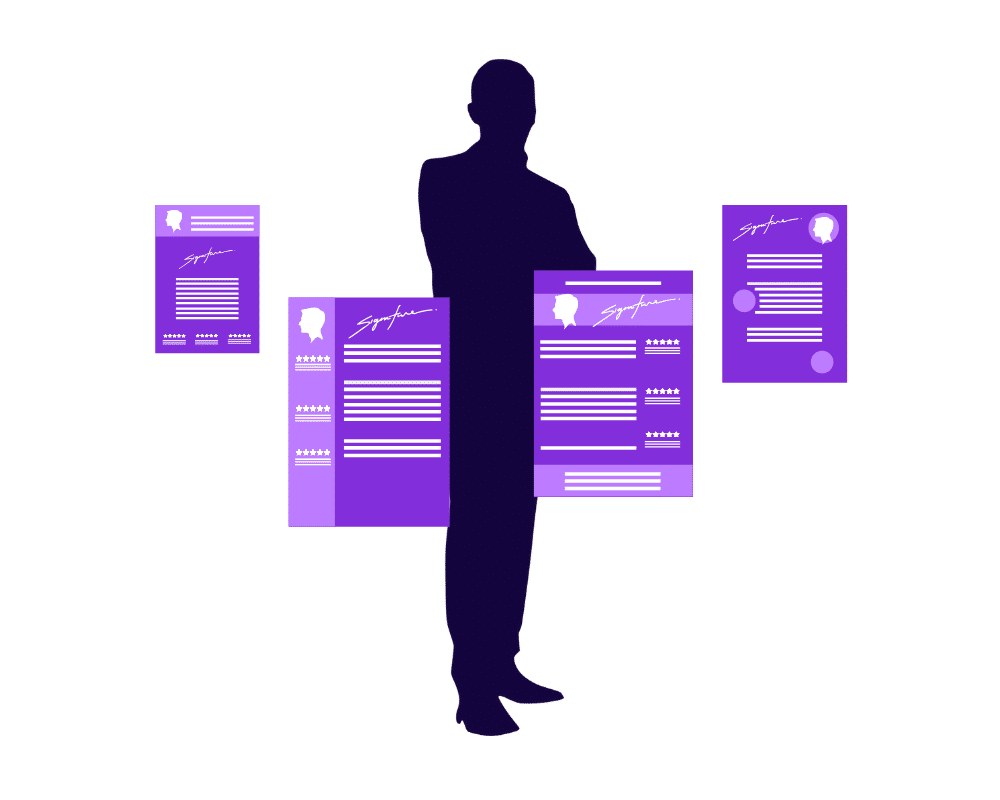
But, before we jump into best practices, what is a speaker one sheet in the first place? A speaker one sheet, otherwise known as a “speaker sheet” or “one-pager,” is a one page document (one or two-sided) explaining who you are, what you speak about, and why the event planner reading it should hire you. In other words, your one sheet is a brief resume for your speaking experience. Like a resume, it should highlight your strengths and showcase your connections within the industry.
Essentially, according to speaker and branding expert Karen Saunders, there are a few key questions that your one sheet should answer. These include “How would you describe your area of expertise?,” “Who do you work with and give presentations to?,” and “What are the benefits of hiring you?” Although there are several others, the main idea is to demonstrate why you are worth hiring in a concise and visually attractive way.
Why do I need a speaker one sheet?
Now, as the speaking industry joins the wave of businesses entering the digital world, many speakers no longer see the need for a printed speaker one sheet. And that’s completely fair! However, your one sheet, because of it’s short length and design, is still essential for a virtual business. If you’re emailing an event planner, for example, your one sheet is an easy way for them to see everything they need to know in a single glance. If you’re reaching out to speakers bureaus, your speaker one sheet shows them your preparedness and your speaking skills. Plus, their sales reps can use it to sell for you, when you join the bureau’s roster. Win win!
Secrets to a Killer Speaker One Sheet
Now that we’ve knocked out what a speaker one sheet is and why you need one, let’s talk specifics. Depending on who you talk to, there are countless tips and tricks for a perfect one sheet. However, they all have six elements in common, all of which answer those questions we mentioned above.
1. Showcase your skills and credentials.
The first essential element for a good speaker one sheet is your credentials. This includes awards in higher education, speaking certifications, or honors within your focus industry. Although you can list them out, as seen on a resume, it’s also generally recommended to include a short biography explaining your background. Additionally, if you have any digital badges for your awards, be sure to include those, too. For example, if you have a badge for getting your CSP (Certified Speaking Professional) or one for being inducted into the Council of Peers Award for Excellence (CPAE) Speaker Hall of Fame, you should definitely include them in your one sheet design.
That said, regardless of how you show your skills, your goal is to answer the question, “What qualifies you to educate me and my audience?” Your bio gives the greatest amount of detail, so if the event planner is interested, they have adequate information. On the other hand, if they only have a minute to check out your one sheet, images of your awards allow them to see your value at a glance.
2. Pinpoint your target audience.
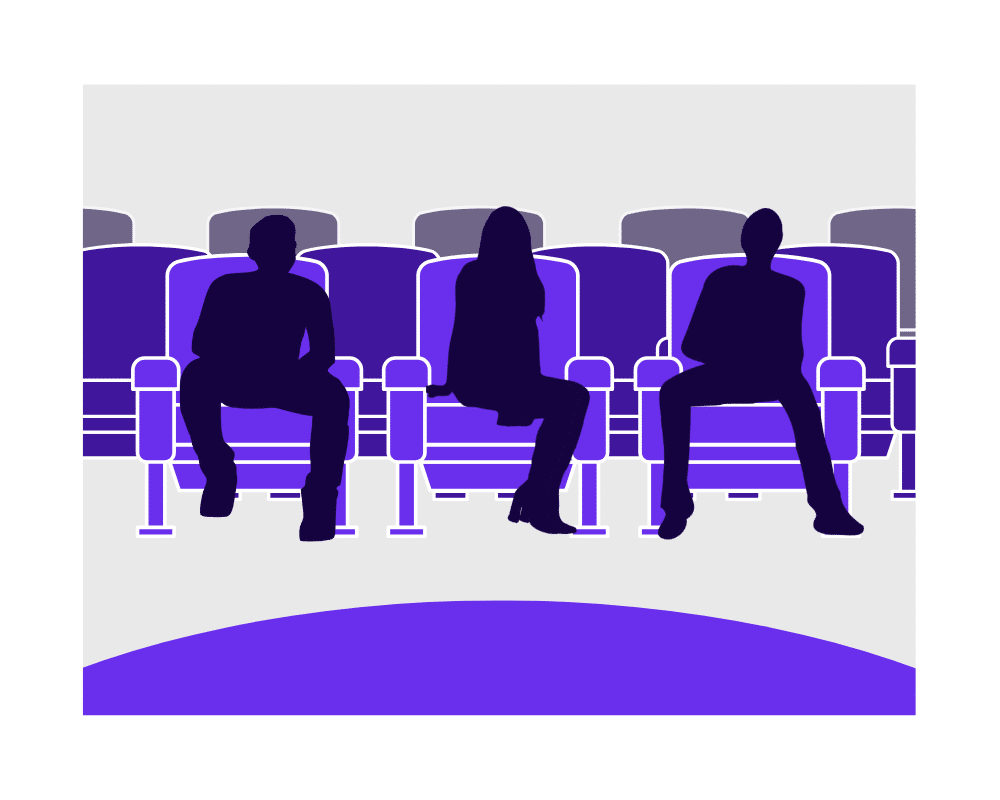
Next, after explaining why you are qualified, make it clear who exactly you’re qualified to speak to. Do you work primarily in education or corporate settings? Are you focused on a dominantly male or female audience? How about geographic location? All of these can be answered as a part of your biography. That way the event planner looking over your speaker one sheet will not only see why you know your stuff. They’ll also see that your presentations are tailored to their industry (so they should hire you immediately).
For example, if you speak about female empowerment in corporate offices, you could highlight this through testimonials (we’ll talk about those in a bit). However, you could also include something simple in your bio, like the following: “[Your Name] uses [his/her] more than 20 years experience in corporate New York to empower women in today’s fast-paced companies to advocate for themselves and promote gender equality.” A header could be even shorter and to the point, such as “Empowering Women in Corporate America to Take Charge”. Depending on whether you’re using one side of the page or both sides, one of these options may be more appropriate. The important thing is to make sure that (a) your one sheet defines your target audience and (b) it’s clearly visible.
3. Explain how your clients will benefit from hiring you.
We’ve covered the questions “What qualifies you to educate me and my audience?” and “Why is your ideal audience?” Now, it’s time for the most important piece: explaining the benefits of hiring you. As with the majority of sales, you can talk until you’re blue in the face about your pricing packages or experience. However, your conversation with an event planner ultimately comes down to how you can help them. How are they going to learn from your presentation? What about their work or personal life will be improved after working with you?
Answering these questions can take a few different routes. The most common is focused on revenue. Outlining an increase in productivity or income for past clients you worked with is an easy way to demonstrate your positive impact. Alternatively, if you offer additional services, you could offer these as a bonus. This includes digital materials, such as consulting or online training, or print materials, like books. Offering these products or services as an add-on gives event planners an easy way to ensure the audience benefits from your training after the event ends. In light of this, mentioning these in a quick bulleted list is a quick way to hook their attention without taking up too much space in your speaker one sheet design.
[hubspot type=cta portal=5815852 id=e68abcd9-8ad0-4673-81d2-450b59a97afc]
4. Explain how the audience will benefit from your presentation.

Speaking of the audience, the next piece of the speaker one sheet puzzle is the audience! In addition to add-on print or digital materials after the event, how will you provide value during the event? In part, you can answer this through testimonials (I promise I’m going to talk about those next). Don’t get me wrong – Hard evidence of your success is a win. However, there’s also the emotional side of professional speaking to consider.
For example, let’s look back at our “Empowering Women in Corporate America to Take Charge” headline for a second. Initially, we mentioned this because it clarifies that women in corporate roles are your primary audience. It’s also useful in that it mentions “Empowering”. It sounds cheesy, but mentioning the tangible and intangible ways your audiences benefit are equally important. Do you inspire, empower, encourage those you speak to? Explaining the ways in which you leave audiences feeling happier and more motivated is just as important as the good work they do because of it.
5. Conclude with testimonials from noteworthy clients.
Finally, I’ve mentioned testimonials a few times, and I feel like this is a no-brainer. Just like looking at reviews when you try a new product, event planners want to hear from your clients. Obviously, not all of your clients are going to be exuberant and over the moon with joy about your presentation. Some people just aren’t like that! Thankfully, with your speaker one sheet, you can showcase your clients that are. Narrow down past clients who sang your praises and include a quote from them on your one sheet, to let them do the selling for you.
It’s also important to include happy testimonials from any noteworthy clients. This is especially true for big-name clients in your focus industry. One of our close friends at SpeakerFlow, Dawwna St. Louis, is a perfect example of this. As a motivational speaker and entrepreneur, Dawwna spoke, in the past, for Microsoft and received raving reviews. On her speaker one sheet, adding one of these testimonials directly shows how killer her performance was. Plus, it indirectly adds to her credentials and skills. After all, not every speaker gets a gig with one of the largest tech companies in the world.
6. Have your contact information and headshot clearly visible.
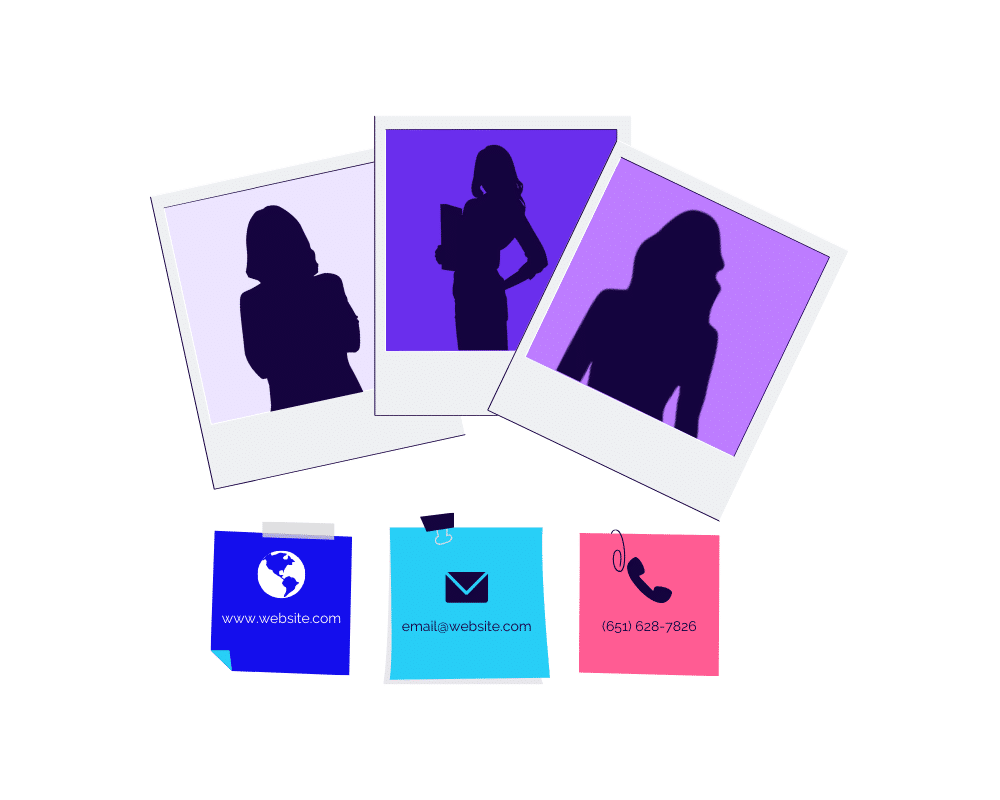
Lastly, make sure your contact information and headshot are included. What good is going to the work of showing your talents and past clients if the reader can’t reach you? If your speaker one sheet is a single side of the page, make sure your email address, phone number, and website is easily visible. If your one sheet is two-sided, included all of this information on both sides, such as along the page footer. Many speakers also opt for a call-to-action in large text, too, such as “Call 1-800-588-2300 to book John for your next event!” This can be helpful, as it saves the event planner the time of deciding whether they should email or call you.
All in all, whether you’re a new speaker or an expert on stage, a well-designed speaker one sheet can be a game-changer. Hopefully, this guide provides a quick and simple way to make sure you’re checking all the one sheet boxes. That way, you can spend more time showing event planners why you’re awesome and less time having to explain it.
Click below for a free checklist of these six speaker one sheet tips and tricks as well as three free examples!


